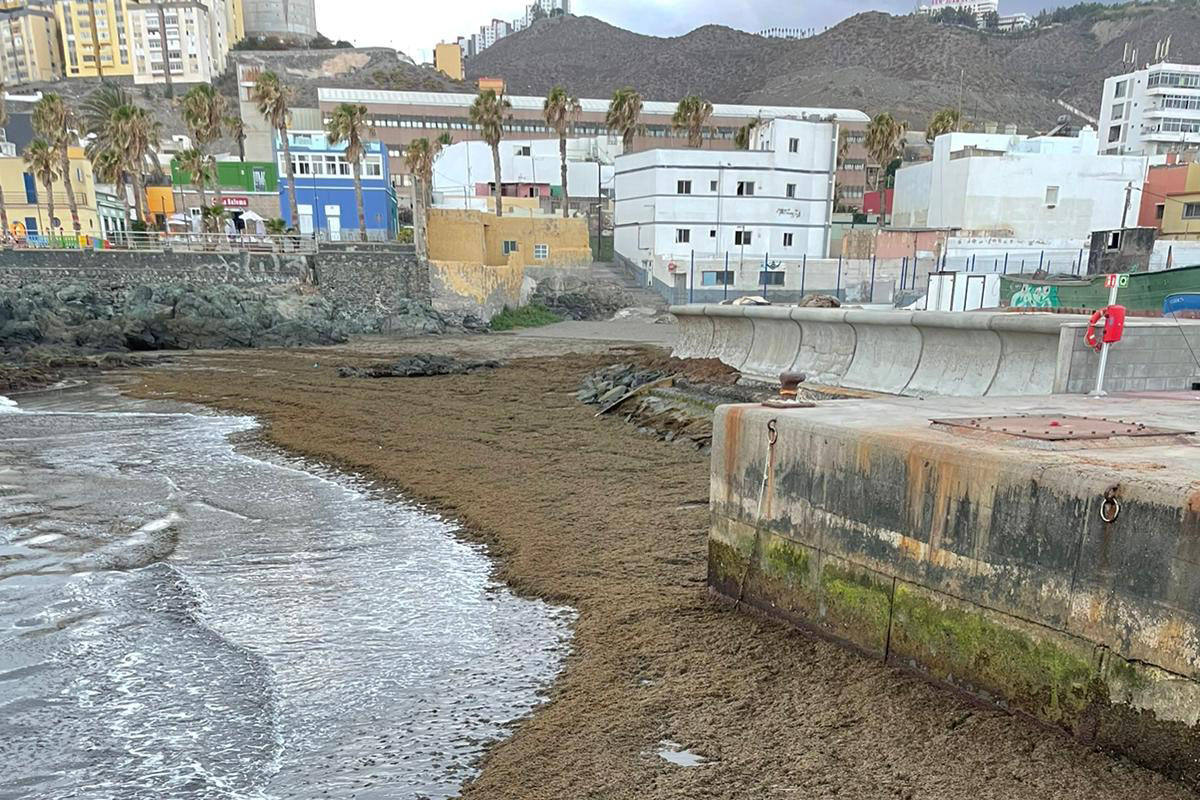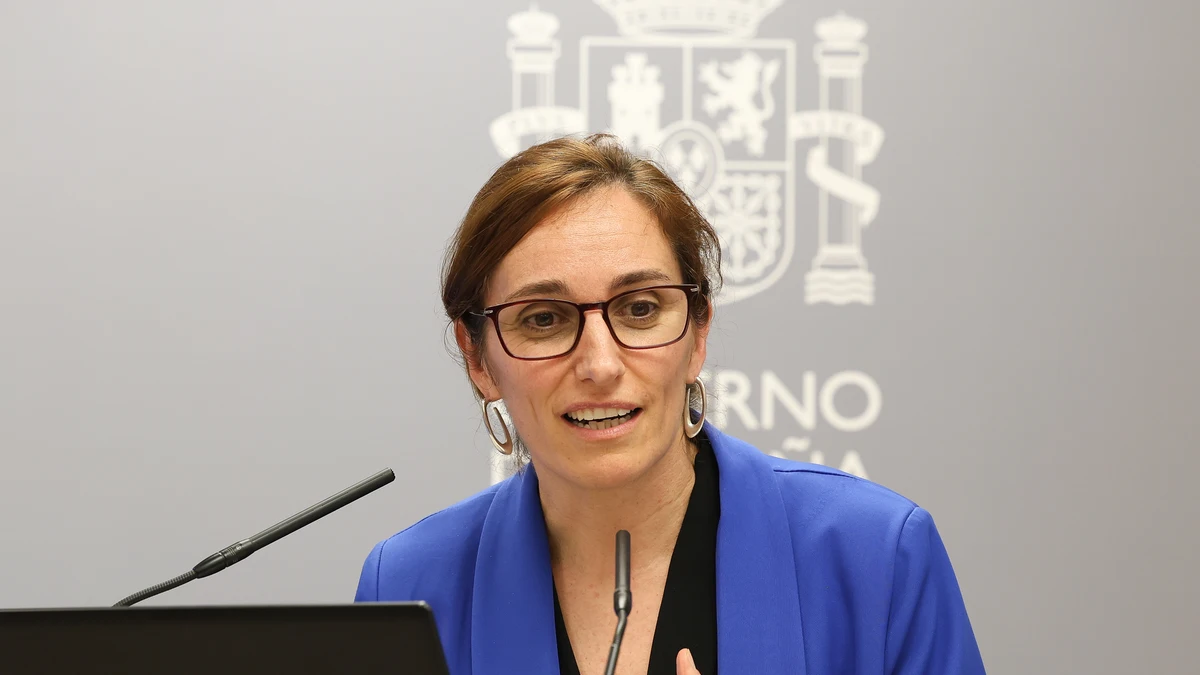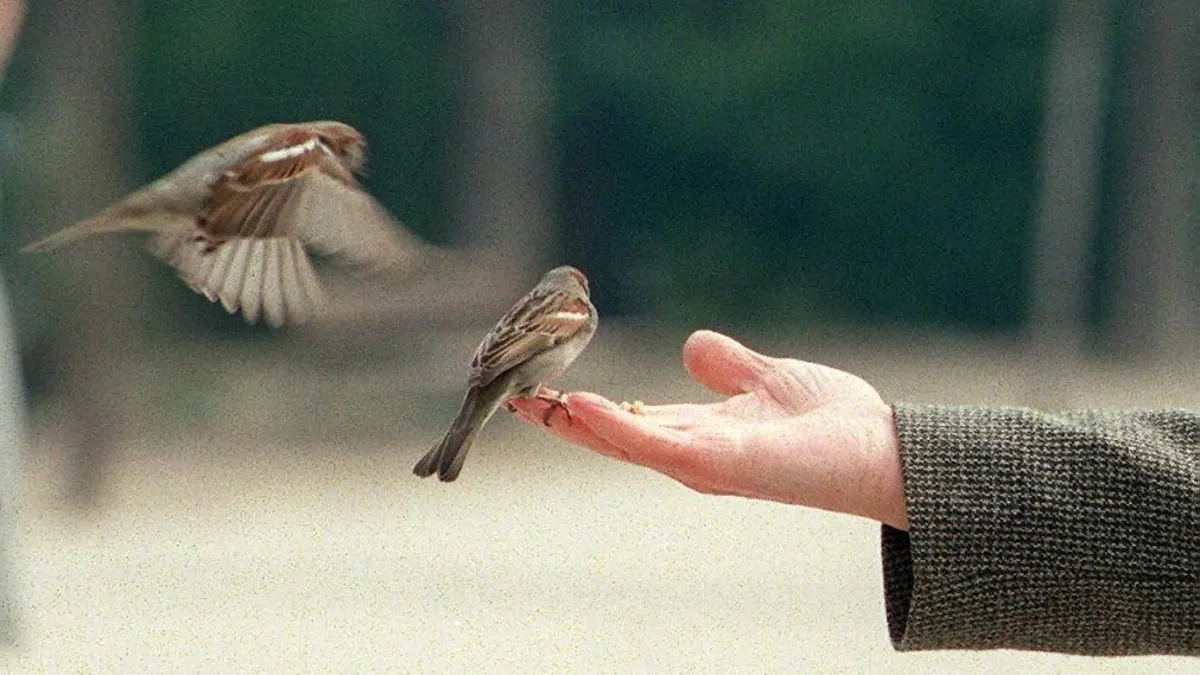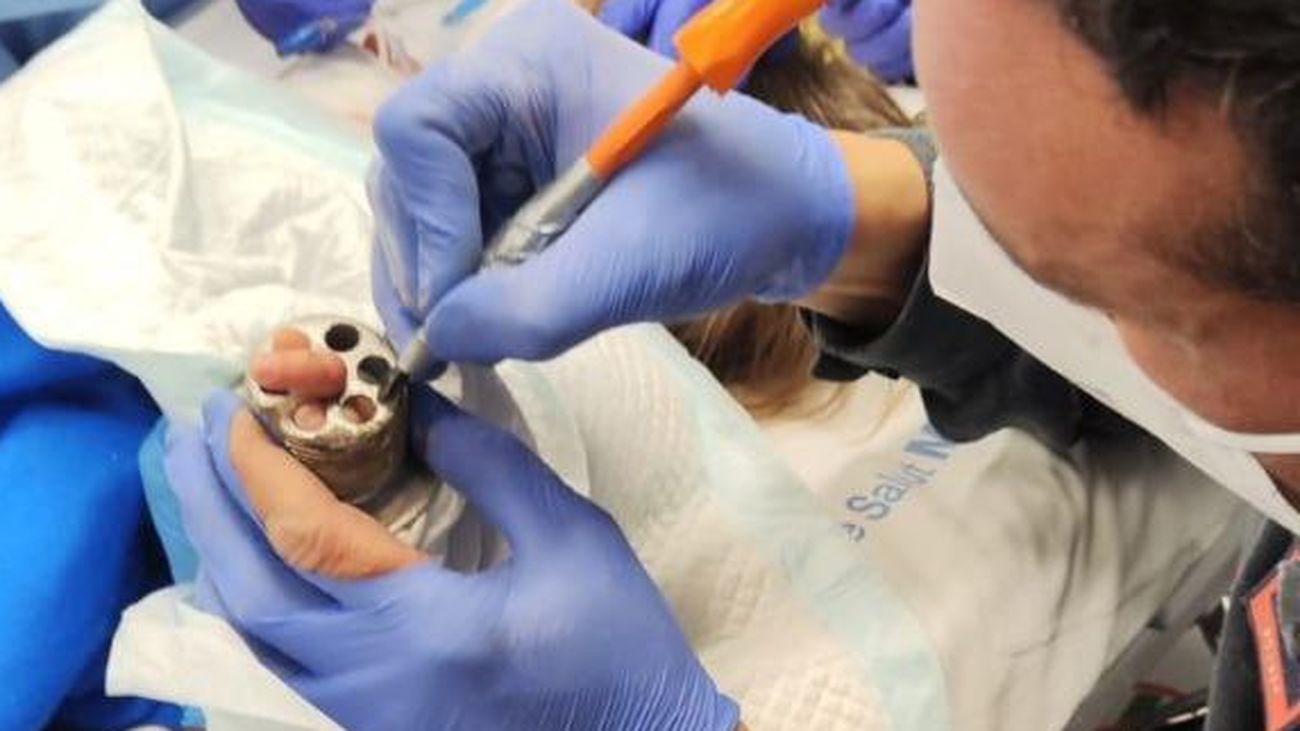Vigilant before the expansion in the Canary Islands of the new invasive algae

Accumulation of this invasive algae on the beach of La Puntilla, in the seaside neighborhood of San Cristóbal in the capital of Gran Canaria. /
ULPGC researchers have identified the species 'Rugulopteryx okamurae' on the coast of Gran Canaria, between San Cristóbal and Melenara
A dense blanket of brownish and smelly algae covers several points of the coast of San Cristóbal, in the capital of Gran Canaria, since at least last June. Now, researchers from the University Institute for Research in Sustainable Aquaculture and Marine Ecosystems (IU-ECOAQUA) of the University of Las Palmas de Gran Canaria (ULPGC) have discovered that
it is 'Rugulopteryx okamurae', an invasive algae that is destroying artisanal fishing in the Strait of Gibraltar and covering the beaches of this part of the Mediterranean.
"Let us have proof,
it is the first time that they are mentioned in Canary waters. Maybe it's in more areas», says Professor Ricardo Haroun, acting director of the IU-ECOAQUA, who confesses his concern about the appearance of a species that is altering marine biodiversity on the coasts of Malaga, Cádiz and Ceuta since 2015.
“It has also appeared not long ago in the Azores and recently in Madeira. There was a probability that it would appear in the Canary Islands and so it has been, ”laments the specialist who recalls that 10,000 tons of these algae have been removed from the Andalusian coast, which affect the coastline from the landscape and fishing point of view.
The researchers noticed the presence of an accumulation of algae in the area of the
La Puntilla beach and San Cristóbal Pier, in the capital of Gran Canaria. “At low tide, we began to see that those algae were not native. We took them and analyzed them when we realized that a large biomass was forming”, explains the researcher who has detected the presence of the algae between San Cristóbal and Melenara.
According to Haroun, this algae constitutes a risk from the environmental point of view as it replaces native species.
«The ecological effect is unknown to us. If it serves as a shelter for animals, the effect will not be so bad. If it is not consumed, it generates biomass or releases harmful substances, it can be a problem», says the scientist.
«The species is already adapted to Canarian waters»
Researchers from the University Institute for Research in Sustainable Aquaculture and Marine Ecosystems (IU-ECOAQUA) have detected the presence of algae of Asian origin in some points on the coast of Gran Canaria between San Cristóbal and Telde, but they do not rule out that it may be present in other areas of the Canary Islands, especially in the vicinity of the Port of Santa Cruz de Tenerife.
"The species is already adapted to the waters of the Canary Islands, which is why it has arrived and occupies intertidal pools and is also below sea level in some areas," acknowledges the acting director of IU-ECOAQUA, Ricardo Haroun, who asks for media to study the expansion and effect of the invasive species on the Canarian ecosystem.
“You have to be vigilant. We cannot let go”, warns Haroun, who recalls that the proliferation of algae on the Andalusian coast has caused problems on the beaches and has even prevented fishermen from using their nets.
At the moment, despite the fact that they have traced the coast of Fuerteventura and Lanzarote, the algae has only been detected in Gran Canaria, but the scientist does not rule out that it may have reached other islands. “It is known that it enters through the ports and colonizes the rocky areas, advancing more and more”, says the ULPGC professor.









